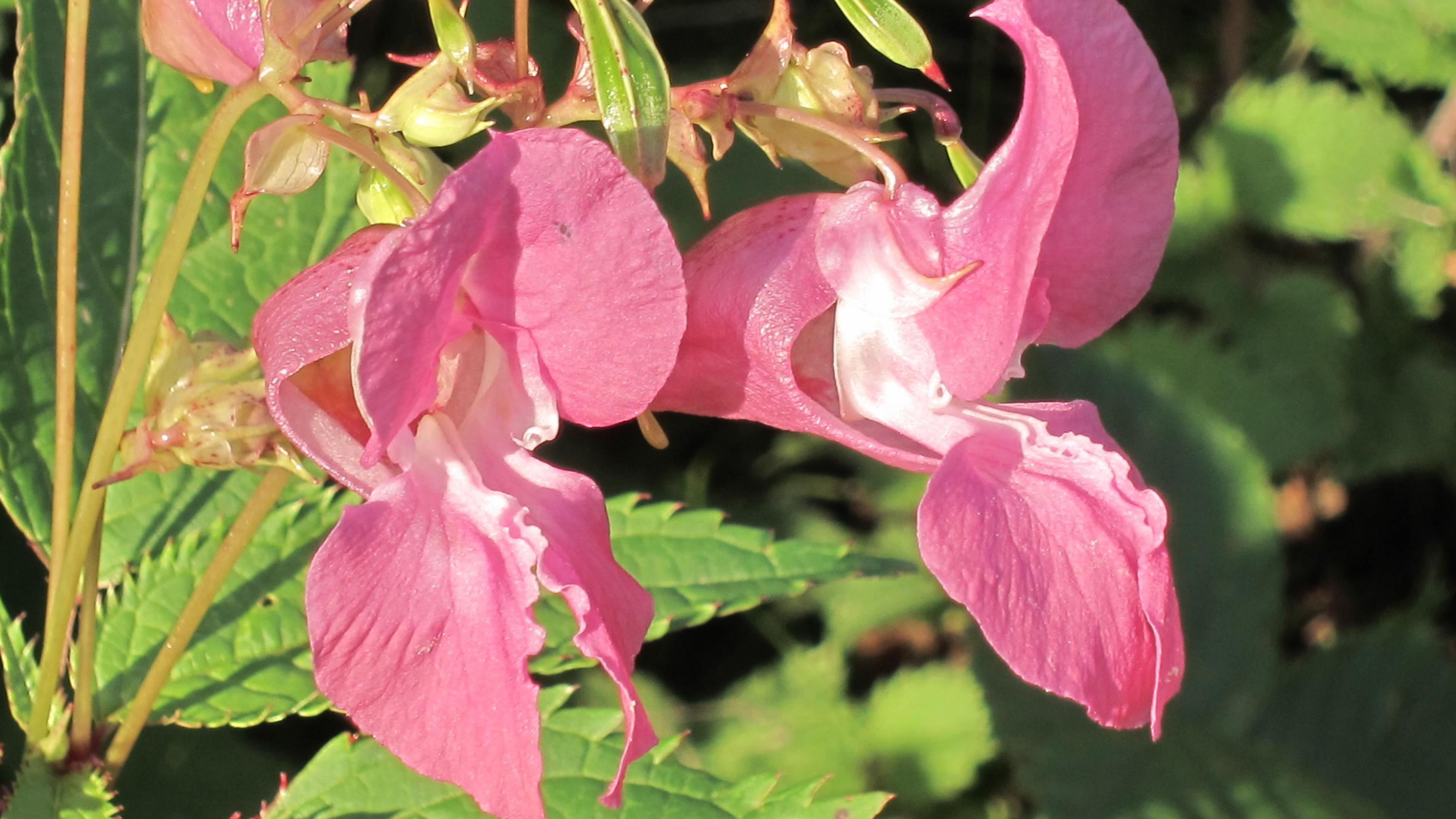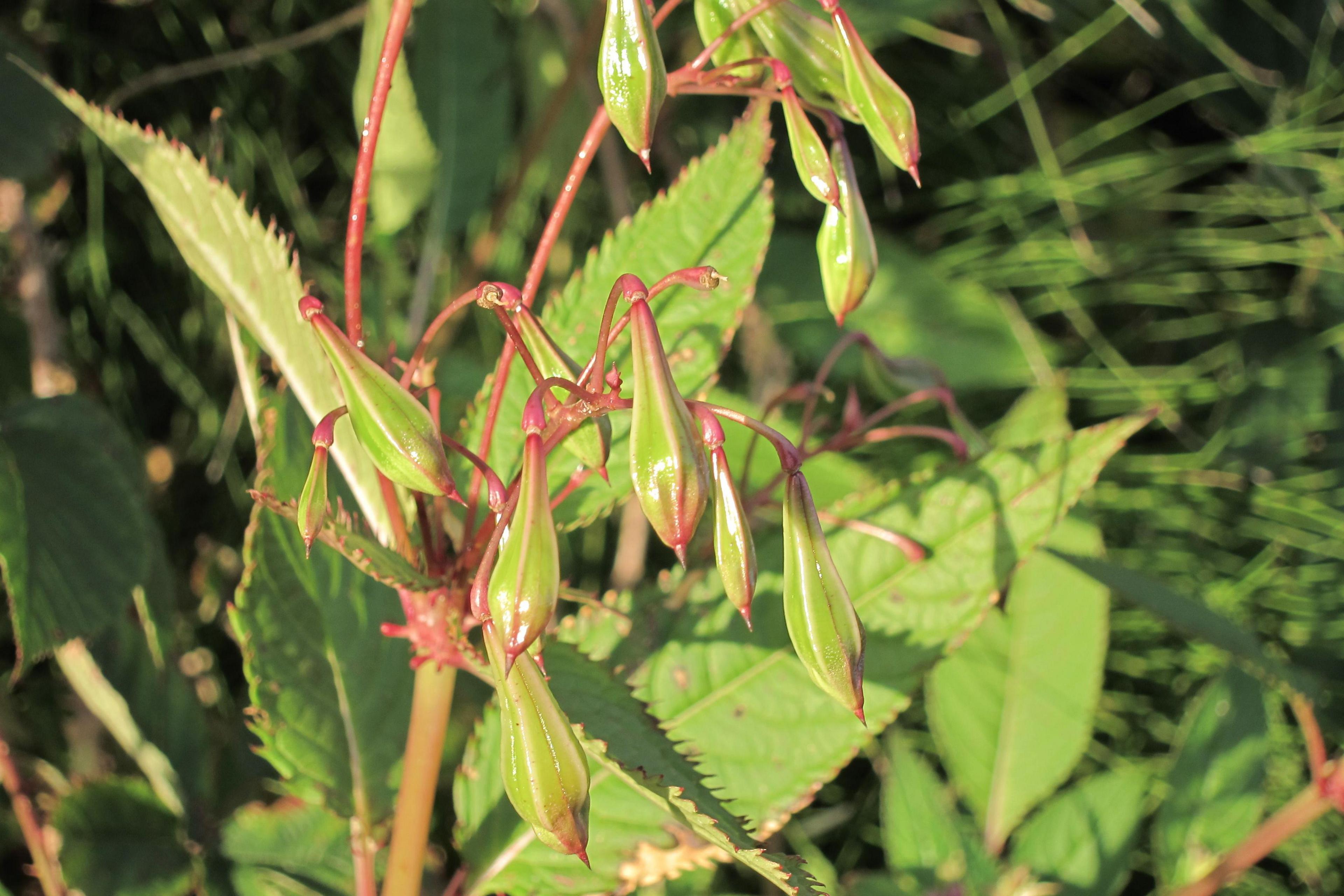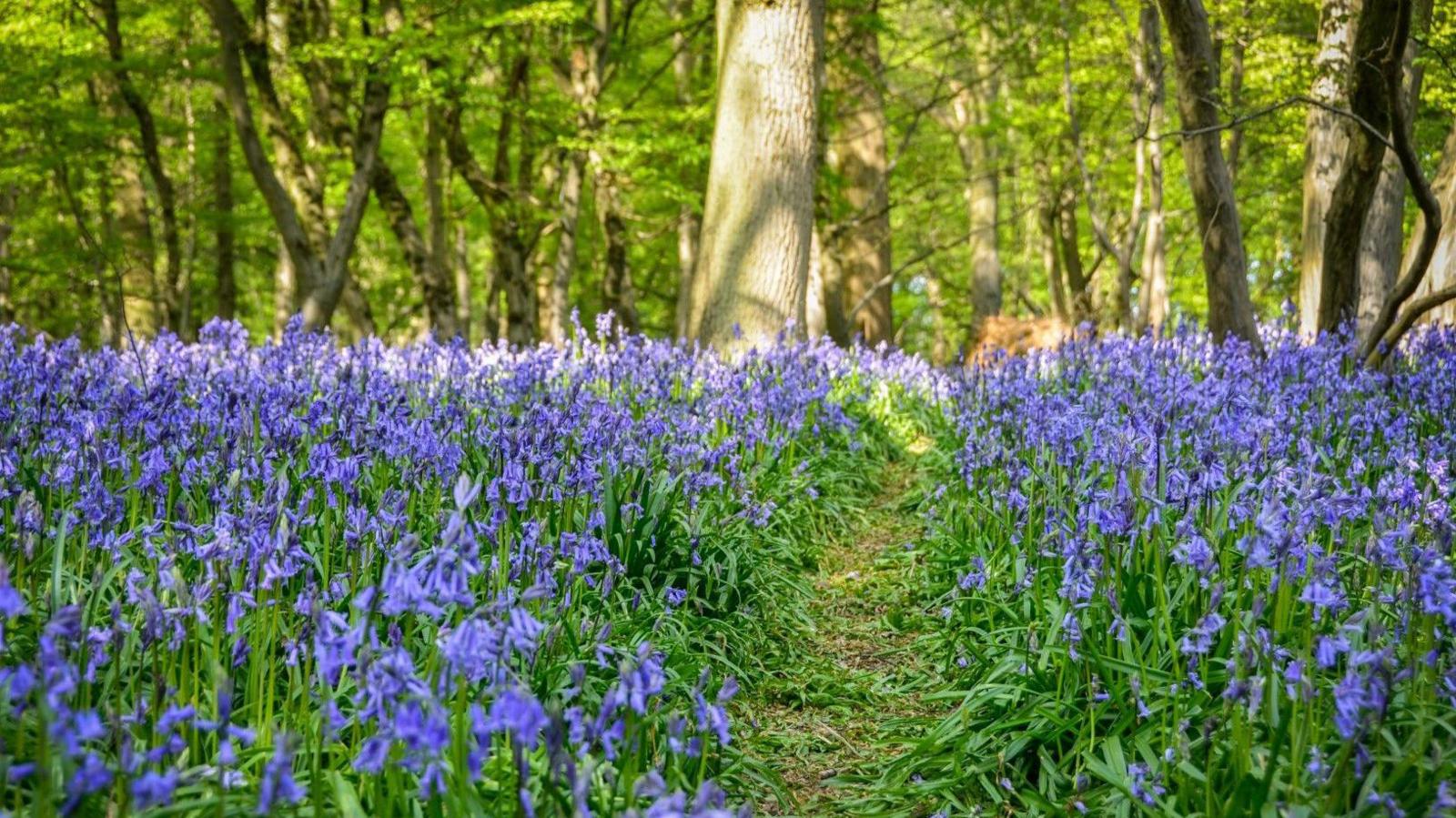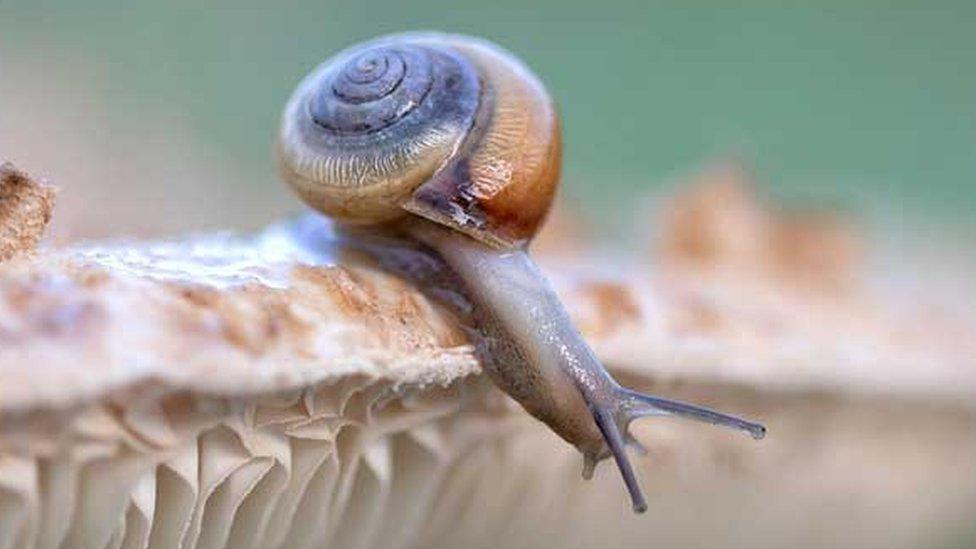Fungus is unleashed on unwelcome plant from Himalayas

Previous methods of dealing with the plant have involved hand pulling it, including its roots, from the ground
- Published
A type of rust fungus could be the answer to an invasive Asian plant that is waging war on some of Britain's riverbanks.
Himalayan balsam can erode riverbanks and grow to heights of up to three metres.
The Herts and Middlesex Wildlife Trust said it would use a pathological rust fungus, which was found in the Himalayas, to try stunting the plant's growth.
The trust describes the chalk rivers in Hertfordshire as the UK's equivalent of tropical rainforests.
Josh Kalms, the people and wildlife officer at the trust, said the invasive flower "shades out native plants" which are a food source for some invertebrates.
The roots from the plant, which was first introduced from northern India in 1839, also disturb native flora.
"Those native plants with their variety of root structures also uphold the structure of our riverbanks and as they disappear so does the stability around the water’s edge," he said.

Himalayan balsam have explosive seed pods meaning they quickly spread to rivers after being introduced as a garden plant
The trust is trialling the fungus - alongside the non-profit international organisation CABI, external - thanks to funding from the Environment Agency, Affinity Water and Lee Valley Regional Park Authority.
If successful, the trial could be replicated at two areas along the River Stort near the Thorley Wash Nature Reserve.
The trust says the fungus has been tested to ensure it does not impact on other species while growing in a UK climate.
Previous methods of tackling the Himalayan balsam have included simply pulling it from the ground.
Follow Beds, Herts and Bucks news on Facebook, external, Instagram, external and X, external. Got a story? Email eastofenglandnews@bbc.co.uk, external or WhatsApp us on 0800 169 1830
You might also be interested in
- Published17 April 2024

- Published14 March 2024

- Published28 February 2024
